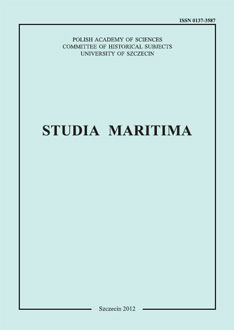Stone Houses, Glazed Jugs And Pilgrim Badges. An Archaeological Contribution to the Problem of the Cultural Unity of the Hanseatic Towns in the Baltic
Stone Houses, Glazed Jugs And Pilgrim Badges. An Archaeological Contribution to the Problem of the Cultural Unity of the Hanseatic Towns in the Baltic
Author(s): Marian RębkowskiSubject(s): Archaeology
Published by: Wydawnictwo Naukowe Uniwersytetu Szczecińskiego
Keywords: Hanseatic towns; archaeology; the Middle Ages
Summary/Abstract: Archaeological research on the Hanseatic towns established in the Middle Ages in the Baltic region has been conducted on a large scale since the 1980's. Discoveries made since then allow to formulate a thesis about the cultural unity among the inhabitants of towns situated on the South Baltic coast between the 13th and 15th centuries. Based on selected instances of the urban culture, widely discussed in archaeological sources, the paper is an attempt to prove that a number of similarities can be revealed in various spheres of life led by the inhabitants of towns located in the Baltic region, often situated far away from one another. The analysis covered the following aspects: architecture - quoting the example of tenements with entrance halls which in the 14th century became a common element of the cultural landscape in towns located in the Baltic region; pottery - quoting the example of popular in this part of Europe stoneware and red glazed jugs; and, last but not least, devotional objects — quoting the example of pilgrim badges that revealed evident preferences demonstrated by the pilgrims as to their pilgrimage destinations, paying special attention to supra-regional sanctuaries located in German-speaking area, particularly on the Rhine and the Moza rivers. As for reasons underlying the development of the cultural unity of the Hanseatic towns, archaeologists mention similar legal and economic factors contributing to their development, much the same cultural and ethnical origin of the townspeople the majority of whom came from German territory, and, last but not least, business contacts (particularly distant ones) which, after all, embodied the essence of the Hanseatic League since they were aimed at exchanging not only goods, but also ideas.
Journal: Studia Maritima
- Issue Year: 27/2014
- Issue No: 1
- Page Range: 5-23
- Page Count: 19
- Language: English

